#anna mahler
Text
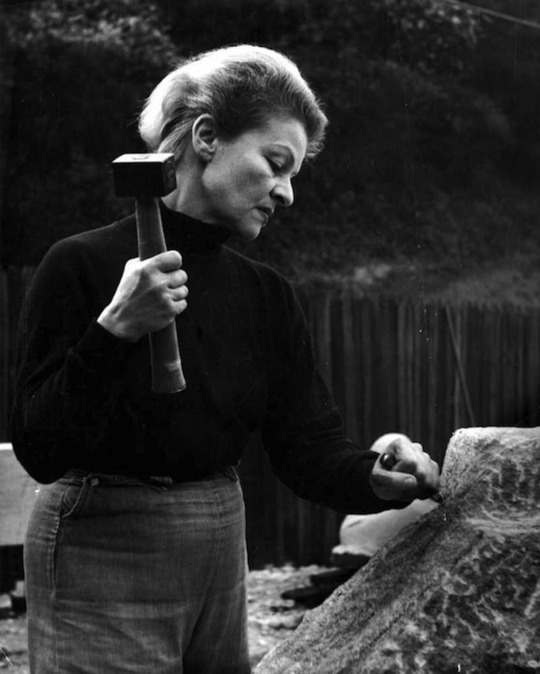
Anna Mahler
7 notes
·
View notes
Text





die kriegsbraut, tom toelle 1974
#die kriegsbraut#tom toelle#hedwig courths-mahler#1974#the aviator#wings#spione#ein großer graublauer vogel#obst & gemüse oder der kunde ist könig#anna karenina#karen shaknazarov#helge schneider#christoph schlingensief
1 note
·
View note
Text
Broncia Koller-Pinell
I was reading an article entitled A Forgotten Fame in the German Arts magazine, Schirn Mag. It was about the life and works of the Austrian artist Bronislawa (Broncia) Pinell, later, Broncia Koller-Pinell and the headline read:
“…Broncia Koller-Pinell is listed as one of Austria’s most important female artists of the turn of the 20th century – but today her name has been almost entirely…

View On WordPress
#Anna Mahler.#Art Blog#Art History#Austrian artists#Egon Schiele#Rupert Koller#Saul Pinell#Sylvia Koller#Vienna Secession#Wiener Werkstätte
0 notes
Text
0 notes
Text

lost klimt portrait shows up in vienna :0
Fräulein Lieser ("Miss Lieser") has never been on public display since its creation in 1917 - you are now looking at the painting in color for (probably) the first time ever.
The current owner inherited the painting in 2022 - it originally came to be in the possession of their predecessors in the 1960s, but it is unclear how the painting came to be in the first buyer's possession. There is no information available about whether or not the painting had to be relinquished, was confiscated or sold under distress by the Lieser family after 1938. However, since the potential original owners were both forcibly dispossessed in 1938, documentation of the dispossession for this particular may have been lost.
On April 28th, the painting will be put up for auction at im Kinsky in Vienna, with the price being projected to be between 30 to 50 million euro. The legally unclear situation of whether or not the painting is Nazi-looted art is why the auction was commissioned by both the recent inheritor and the legal successors of Adolf Lieser and his sister-in-law Henriette Amelie "Lilly" Lieser, in accordance with the Washington Principles.
In the past, the depicted young woman was identified as Adolf's daughter Constance Margarethe Lieser, who would have been 18 years old during Klimt's creation of the painting. However, new research presented by the auction house im Kinsky has brought up doubts as to who the depicted "Miss Lieser" actually is. Adolf's sister-in-law Lilly Lieser, who had married and later divorced Adolf's brother Julius, was a patron of the arts and might have commissioned a painting of either of her daughters, Helene and Annie Lieser. Klimt himself never identified the commissioning customer beyond "Lieser" and died in 1918, before the painting was finished.
Lilly Lieser was a central patron of art and music in fin de siécle Vienna. She is especially well-known for her financial support of Arnold Schöneberg and was an avid art collector. For years, her best friend was Alma Mahler-Werfel. Both Adolf and Lilly Lieser were dispossessed in 1938 and later deported to Riga and/or Auschwitz, where they were murdered. Details to Margarethe's life aren't readily available, she died in London in 1943 or 44. Helene Lieser, who had been the first woman in Austria to get a PhD in political sciences, fled Austria in 1938 and ended up in Geneva. After the war, she lived in Paris, working for UNESCO, OEEC and the International Economic Association. She died from cancer in 1962 in Vienna. Annie Lieser, who was a celebrated interpretative dancer, married Austrian artist Hans Sidonius Becker. In 1938, her and their son Johann managed to flee to the US. Hans Becker was active in the Austrian resistance movement and annulled their marriage in 1941 to marry another woman. Annie probably never went back to Austria but kept contact with several other Austrian emigrants in California, among them Alma Mahler-Werfel and Luzie Korngold. She died in Los Angeles in 1972.
The painting will be shown to the public from April 10th at im Kinsky in Vienna as well as during a projected world tour to Asia, Europe and the USA.
Sources:
Olga Kronsteiner, DER STANDARD 25.01.2024
Wikipedia: Henriette Amalie Lieser, Helene Lieser, Hans Sidonius Becker
Alexandra Matzner, ART IN WORDS 25.01.2024
Valerie Gaber, im Kinsky 25.01.2024
Alexandra Löw, BiografiA Annie Becker
Anna Amilar, BiografiA Henriette Amelie Lieser, Website
Photograph of Bildnis Fräulein Lieser © Auktionshaus im Kinsky GmbH, Vienna
#gustav klimt#fräulein lieser#vienna#wien#Jugendstil#secession#austrian art#lilly lieser#adolf lieser#raubkunst#fin de siecle
64 notes
·
View notes
Text
Namibia 2023/24 - Tag 6
Herrschaften und Oukies!!!
Schweren Herzens verließen wir heute Morgen kurz nach 9 Uhr die gemütliche Farm Heimat und fuhren ganz entspannt die Nebenroute bis nach Mariental.

Rainer war so freundlich uns noch ein wenig Proviant fürs abendliche Grillen mitzugeben: Boerwors, Lammkoteletts und Kudusteaks. Der Preis dafür ist ja immer so lächerlich gering, da gleichen wir mit einem üppigen Trinkgeld gerne aus.

Es ging über Schotterpisten zunächst bis nach Dordabis mit der alten Farm von August Stauch, dem Finder der ersten Diamanten, und der Ibenstein Weberei.

An Schnittpunkt mit der D 1223 liegt der sogenannte "Mäuseturm", der eigentlich Hindenburgturm heißt, eine Befestigungsanlage aus Kaiser Wilhelms Zeiten.

Er ist das letzte koloniale Bauwerk der Deutschen in Namibia und wurde 1915 als Verteidigungsturm gegen die Rehobother Baster, von denen die Farmer annahmen, dass sie zu den Südafrikanern überlaufen würden, errichtet.

Weiter führt uns die Strecke zu so spannenden Orten wie Uhlenhorst und Jena.

Das letzte Mal waren wir hier im Jahre 2017 unterwegs. Allerdings hat sich in den 6 Jahren eigentlich so gut wie nichts verändert.

In Jena steht, man glaubt es nicht, ein echt deutsches Stadtschild: schön gelb leuchtet einem "Jena" entgegen. Der Eigentümer der gleichnamigen Farm hat das Schild extra aus Deutschland mitgebracht.

Wir wechseln dann auf die C15, die nun im Auobtal entlang verläuft. Die nächste Siedlung, die wir passieren, ist Hoachanas. So armselig die Siedlung heutzutage aussieht, würde man niemals vermuten, dass es sich hierbei einst um die ehemalige Hauptstadt des Königreichs der Nama gehandelt hat.

Die alte Kirche, die bereits 1857 erbaut wurde, also vor der deutschen Kolonialzeit, stammt von der Rheinischen Missionsgesellschaft.

1905 wurden hier die Verwundeten des Gefechtes von Groß Nabas untergebracht.

Von Hoachanas geht es weiter nach Stampriet. Von Stampriet bis Mariental gab es dann wieder eine prima Asphaltstraße. Zugleich merkt man an den Siedlungen aus Blechhütten, dass man sich einem größeren Ort nähert.
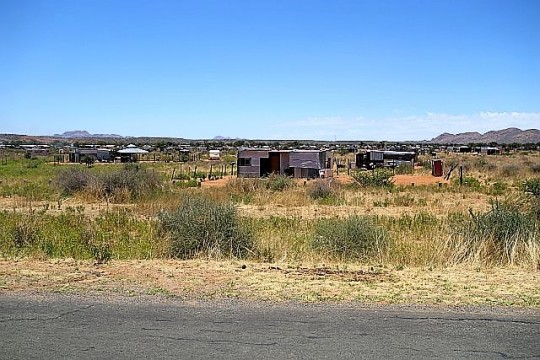
In Mariental stürmten wir den gut sortierten Spar und kauften alles, was wir für die nächsten Tage zur Selbstversorgung brauchen.

Leider lungern dort auch etliche zwielichtige junge Männer herum. Deswegen bewachte meine Mutter erfolgreich das Auto, während wir in den Laden sausten.
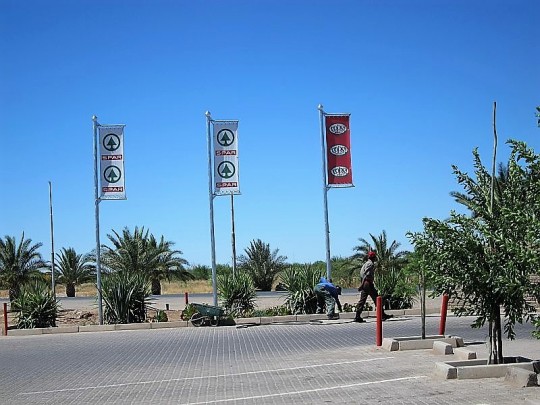
Der Ortsname Mariental ist tatsächlich deutschen Ursprungs: Hermann Brandt ließ sich als erster weißer Siedler in dieser Region nieder, nachdem er 1890 Farmland von dem Nama Kapitän (Häuptling) Hendrik Witbooi gekauft hatte. Zu Ehren seiner Frau Anna-Maria Mahler benannte er die Farm Mariental.

Die Stadt liegt an der Grenze der Kalahari. Der Stamm der Nama nannte die Stadt "Zaragaeiba", was soviel wie staubig bedeutet. Das gilt ganz besonders für den Sommer, in dem die heißen Winde den Sand in alle Richtungen wehen.

1894 waren ein Unteroffizier und 14 Soldaten auf der Marientalfarm stationiert. Im Jahre darauf wurde eine Polizeistation eingerichtet.

Der Grundstein zur ersten Holländisch-Reformierten Kirche wurde am 11.September 1920 gelegt, und 2 Monate später gab es offiziell einen Ort namens Mariental.

Die letzten rund 30 Kilometer zur Lapa Lange Lodge waren dann wieder Schotterpiste.
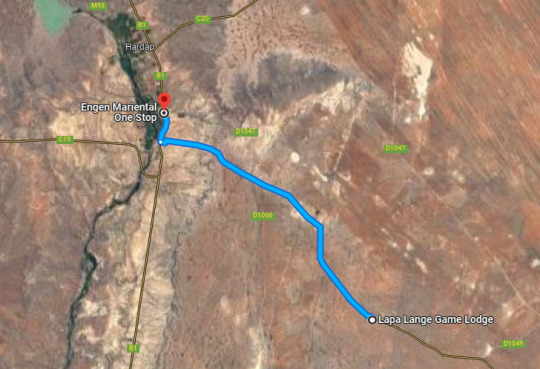
Gegen 16 Uhr trudelten wir in der Lapa Lange Lodge ein.

Für uns ist es hier der zweite Besuch.

Anfang des Jahres hatte ich bereits einen der 4 Familienbungalows, unten am Wasserloch, gebucht.
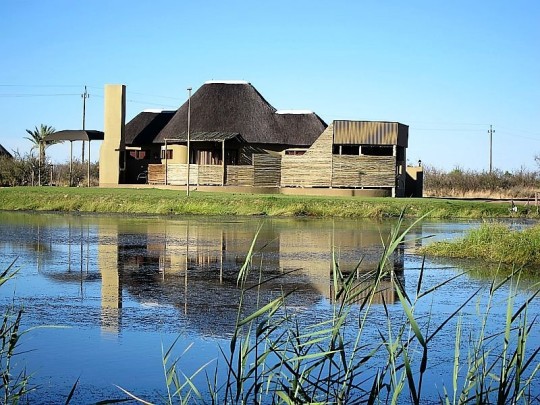
Das hatten wir uns schon 2014 ganz fest vorgenommen: kommen wir hier noch einmal hin, gibt es einen der großen Bungalows am Wasserloch, damit wir von der Terrasse die Tiere vis-à-vis haben.

In der Lapa Lange Lodge waren wir dieses Mal eigentlich als Selbstversorger eingebucht...
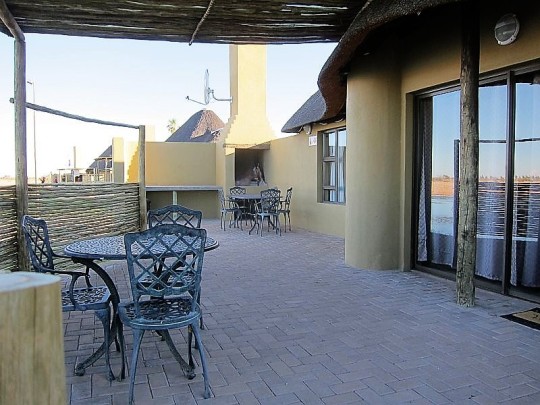
... damit wir möglichst wenig die Terrasse verlassen müssen und möglichst keine Tierbeobachtung verpassen.

Allerdings bestand die resolute Dame an der Rezeption darauf, dass wir B&B - also mit Frühstück - gebucht hätten.

Wir wollten uns jetzt nicht herum streiten und nahmen dann eben das Frühstück mit dazu.

Wie wir von unseren Freunden Claus & Conny (dem Bayernschorsch), die Anfang des Jahres hier waren, bereits wussten ...

... scheint man den Mangel an Gästen durch zusätzliche Leistungen ausgleichen zu wollen.
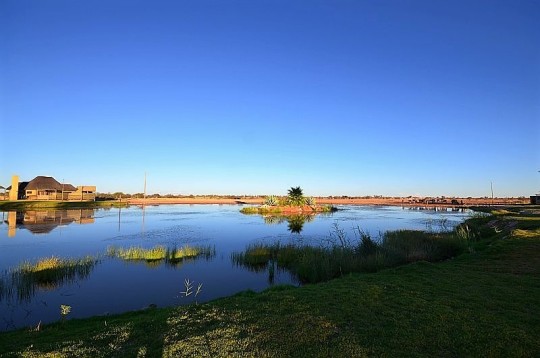
Unser Familienbungalow war der Letzte in der Reihe, ganz nah an der Abgrenzung zum Wildbereich.

Von der Terrasse bietet sich ein toller Blick auf die Tiere, die ans Wasser kommen.

Micha warf auch gleich den Grill an und Mama & ich wickelten die gekauften Kartoffeln und den Gemsquash in Folie.
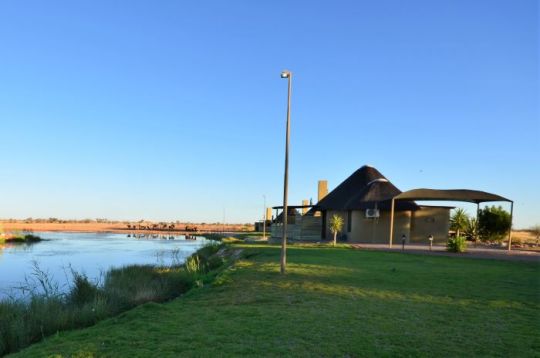
Während des Essens, das natürlich auf unserer Terrasse statt fand, sahen wir immer wieder eine Fuchsmanguste hin und her flitzen.
Lekker Slaap!
Angie, Micha, Mama und der Hasenbär
15 notes
·
View notes
Note
Do you have a list of non boring orchestral pieces? Ones that are dramatic and exciting?
Yes. 99% of orchestral pieces are not boring lol
You need to take a deep breath and skip the classical period. Just listen to everything before and after the classical period. It's only 50 years of music. Just skip it. Just think of the classical period as a pretentious meme propagated by the infamous fuckboy Mozart. And just skip that meme. Listen to everything before 1750 and everything after 1800.
Literally just listen to everyone who isn't Mozart or Haydn. Just skip that 1% of orchestral music and listen to the other 99%. Von Bingen, Vivaldi, Bach, Beethoven, Tchaikovsky, Brahms, Mendelssohn, Respighi, Saint-Saens, Holst, Mahler, Dvorak, Shostakovich, Stravinsky, Bartok, Sibelius, Britten, Vaughan Williams, Ravel, Barber, Copland, Rautavaara, Tan Dun, John Luther Adams, Caroline Shaw, and hundreds of others.
If you don't have the attention span for 30 minutes of music, yes you do. Get off Tiktok. Just sit and look out the window and listen.
I promise you music was not boring for 400 years. Just open your ears and see what happens. There is music that was written hundreds of years ago that is more mystifying and soul-disturbing than anything written today.
Renaissance and Baroque music was about having a good time while innovating and developing musical instruments and theory. I could do a whole separate post about music between 1400 and 1750. But I feel like this has a little bit of everything. Fun, dance, old instruments, and fugue pattern theory.
youtube
Then there was the classical period 1750-1800 and we're skipping that. Basically the only important thing they did was develop instrumental musician technique. A lot of this music is actually very fun and challenging to play. But it doesn't grab the heart of every listener.
And then there was Beethoven.
Beethoven wrote this quartet in 1825, 2 years before his death. What were you and I doing in 1825? We were just dirt and dust when he wrote this.
youtube
He put everything into this quartet. He didn't hold anything back here. If he wasn't destitute, hungry, and financially dependent on Viennese music critics, his symphonies would've all been like this quartet. Still, even though he was holding back in his symphonies, they still managed to change the course of music history. So many musicians and composers fell in love with the romantic popular style of his symphonies. And they all made incredible, fun, exciting music. And I genuinely enjoy that romantic period.
But it took 100 years after Beethoven's death before anyone really understood his final compositions. The person who really understood what Beethoven was doing in his final years was Stravinsky. Stravinsky had wrestled with and won his own battles with critics. So he had the financial support to be more experimental. And he could take what Beethoven was doing in string quartets and expand that to a full orchestra. More than just an orchestra. A ballet. Stravinsky took the legacy of Beethoven's final years and turned that into full ballet productions. The Rite of Spring, the Firebird, Orpheus, Pulcinella, Petrushka, etcetera. It's all great fun.
This isn't a ballet. I just like this little Stravinsky piece from 1938. It sounds like something Beethoven would've written if he wasn't constrained by critics.
youtube
And now, 100 years after Stravinsky, contemporary music has come full circle. We're back to a lot of the same thinking and perspectives of the renaissance and baroque era. Having a good time while innovating and developing musical instruments and theory. Many popular contemporary composers like Caroline Shaw are extremely neo-baroque. Also, a lot of baroque music observed and emulated nature. And now we have Anna Thorvalsdottir and John Luther Adams doing exactly that.
youtube
If Vivaldi ever did LSD he would probably write something like this.
118 notes
·
View notes
Text
today: seeing the matinee of Anna Karenina at Joffrey ballet, planning to read some war and peace at the chicago athletic association downtown, and then seeing the symphony perform mahler 5. and i desperately need someone to shove me into a locker and call me a nerd
9 notes
·
View notes
Text


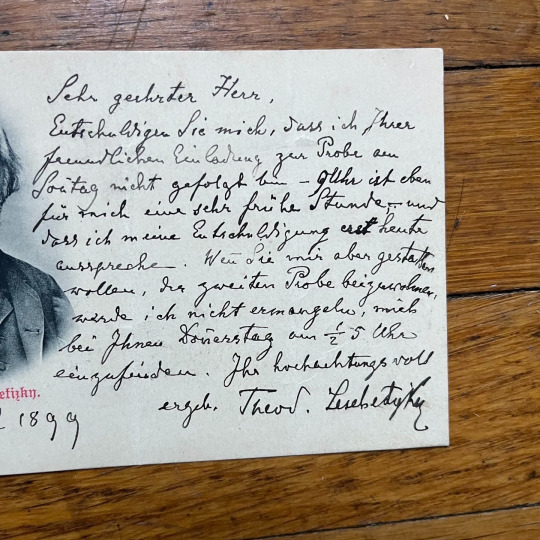

OTD in Music History: Historically important pianist and pedagogue Theodore Leschetizky (1830 - 1915) is born in what is now Poland.
Leschetizky was the beneficiary of an enviable musical pedigree: In his youth, his father took him to study in Vienna with famed pedagogues Simon Sechter (1788 - 1867) and Carl Czerny (1791 - 1957), and at age eleven he actually performed a Czerny piano concerto under the baton of Franz Xaver Wolfgang Mozart (1791 - 1844) -- the son of Wolfgang Amadeus Mozart (1756 - 1791)!
Quickly recognized as a master teacher in his own right, at the invitation of his friend Anton Rubinstein (1829 - 1894), Leschetizky traveled to St. Petersburg to teach in the court of the Grand Duchess Yelena Pavlovna. Remaining there from 1852 to 1877, he served as head of the piano department at the St. Petersburg Conservatory of Music, and married one of his most famous students, Anna Essipova (1851 - 1914).
In 1878, Leschetizky returned to Vienna and set about creating one of the most eminent private piano schools in the world. Promising pianists flocked from all over the world to his villa in the Währing Cottage District, and the list of his students reads like a veritable "Who's Who" of superstars from the "Golden Age of Piano": Ignacy Jan Paderewski, Alexander Brailowsky, Ignaz Friedman, Ossip Gabrilowitsch, Mark Hambourg, Mieczyslaw Horszowski, Benno Moiseiwitsch, Artur Schnabel, Isabelle Vengerova, Paul Wittgenstein… the list could easily go on…
Leschetizky's personal credo was "no life without art, no art without life.”
PICTURED: A postcard which Leschetizky sent to a friend in 1899 – featuring a portrait of himself on it!
The recipient of this postcard, Hugo Conrat (1845 - 1906), is remembered today for having translated and adapted the texts of the traditional Hungarian folk songs that Johannes Brahms (1833 - 1897) used as the basis for his "Zigeunerlieder" ("Gypsy songs") song cycle, Op. 103 and Op. 112. A prominent Viennese businessman, poet, and amateur composer, Conrat was also on friendly terms with legendary Austrian composer and conductor Gustav Mahler (1860 - 1911).
#opera#classical music#music history#bel canto#composer#classical composer#aria#classical studies#classical composers#classical musician#classical musicians#classical history#historian of music#Theodor Leschetizky#Leschetizky#Teodor Leszetycki#classical pianist#piano#professor#teacher#pedagogue#chest voice#diva#prima donna#maestro#concert#Suita#concerto
4 notes
·
View notes
Text
Vienna Philharmonic, once an all-male ensemble, now has 24 female musicians

NEW YORK
Andrea Götsch was surprised when she won her audition in 2019 that led to membership in the Vienna Philharmonic.
“When I went home, I was just laughing because I couldn’t realize that they had really taken me,” the 29-year-old clarinetist told The Associated Press. “It was always kind of a dream. As a young child already, I watched the New Year’s concert, but it was never a goal. I thought that was too far away.”
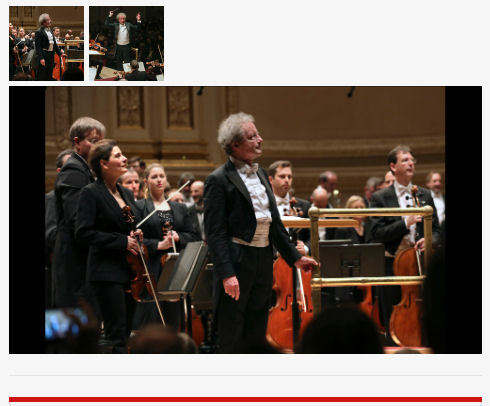
A male bastion from its founding in 1842 until 1997, the Vienna Philharmonic now has 24 female players among 145 members with three vacancies as it tours the United States this week.
“It’s very positive to me. It’s a completely normal way of us living with each other. And we all have one main goal, to give the best possible concert — and that unifies us,” said Daniel Froschauer, chairman of the self-governing ensemble. “Look at music schools: There are many more women than men. And we want the best members, so it was the right decision.”

Based since 1870 at Vienna’s Musikverein, the Vienna Philharmonic elects leadership, engages conductors, chooses programs and schedules tours and recording sessions. It selects members from the Vienna State Opera Orchestra and has had a summer residency at the Salzburg Festival since 1922.
Harpist Anna Lelkes played with the Philharmonic for 26 years as a nonmember before she became the first woman admitted. Albena Danailova became an acting concertmaster in 2008 and was granted membership in 2010. The 48-year-old had the high-profile position leading the strings in Sunday’s performance of Mahler’s Ninth Symphony with conductor Franz Welser-Möst at Carnegie Hall.

VPO women include 14 violins, two violas, two cellos, one double bass, two harps, one flute, one clarinet and one bassoon.
The Berlin Philharmonic, widely considered Europe’s other great orchestra, admitted Swiss violinist Madeleine Carruzzo as its first female in 1982 and currently has 26 women, 99 men and five vacancies.

The New York Philharmonic’s first female musician was harpist Stephanie “Steffy” Goldner in 1922 and it now has 49 men and 45 women with 12 vacancies. The Chicago Symphony Orchestra made principal horn Helen Kotas its first rostered female in 1941 and started this season with 59 men, 34 women and 15 openings.
Froschauer, a first violinist who has been a VPO member since 1998, was elected chairman in 2017. He said about 100 people apply for each open position in the State Opera Orchestra and a quarter are given auditions behind screens for a jury of roughly two dozen. They play pieces chosen by the jury head and are graded, with 20 points the most. Those with 11 points or more advance, and after the second round the field is cut to five, then culled further for the final round.

“A jury member has to say, ‘I’d like to ask to remove the screen,’" Froschauer said. "All the points are cumulative and usually there is one person who has a certain amount. There’s no more screen and sometimes there’s three ladies and sometimes there’s three guys. Sometimes it’s a mix. But the most important thing is what are the points?”
Winners get a one-to-two year trial with the State Opera Orchestra, and then a person will be considered for admission. After two more years, they can apply for membership to the Philharmonic.

Harpist Anneleen Lenaerts, 36, applied for an opening at the suggestion of a friend, Xavier de Maistre, who left the Philharmonic for a solo cello career. She took a flight from Brussels just before Christmas for a pre-audition and then the main audition the next day in the Mahler Hall of the State Opera. She was among two finalists who waited in an adjacent room while the jury deliberated, and they were both called in for the announcement by Michael Bladerer, the double bass who chaired the jury and is now the orchestra’s general manager, its No. 2 official.
She debuted at State Opera in Strauss’ “Arabella” with Welser-Möst in 2011 and was admitted to the Philharmonic in 2014, just its eighth woman.

“I was a freelancer, playing solo and chamber music, which I loved. And I never expected to end up in an orchestra like this,” Lenaerts said. “It is a different country with a different history, different mentality, different language. All of that was new for me. (...) You just have to prepare as best as you can and then hope that in the pit it will go well. And on top of that, you have the schedule of the Vienna Philharmonic.”
Götsch, the clarinetist from Bolzano, Italy, was called into the orchestra as a substitute at the suggestion of VPO member Johann Hindler. She began at the opera with Verdi’s “La Traviata” in 2016 and played with VPO for the first time a year later in Mahler’s Sixth Symphony with Daniel Harding. She won her audition in 2019.

A year later, she was confirmed for the Opera Orchestra and in 2022 she became a VPO member. Götsch sits on the orchestra’s management committee with the title Ordnungswahrerin (Order Keeper), where she keeps track of attendance at rehearsals and performances and deals with quick personnel changes.

“Sometimes they get sick an hour before the concert and so they call me and say ‘I cannot play. Can you help?'" she said. “I have to make sure that there are enough people.”
0 notes
Text



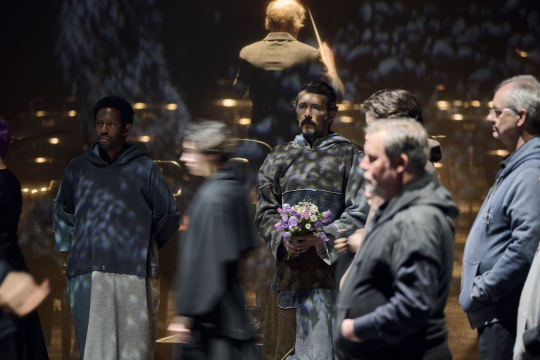
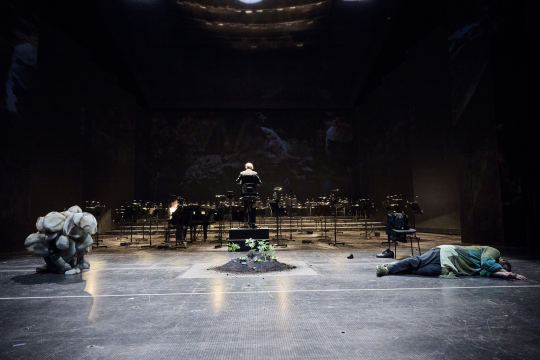


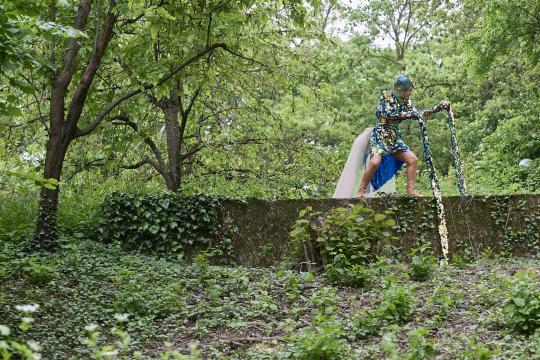





Saint François d'Assise von Oliver Messiaen
Staatsoper Stuttgart | Opernhaus und Stadtraum | 11. Juni 2023
Regie: Anna-Sophie Mahler | Bühne: Katrin Connan | Kostüme: Pascale Martin
mit Beate Ritter, Michael Mayes, Moritz Kallenberg, Danylo Matviienko, Elmar Gilbertsson, GErhard Siegel, Marko Spehar, Elliott Cariton Hines, Anas Séquin und dem Staatsopernchor Stuttgart, dem Extrachor der Staatsoper Stuttgart, der Statisterie der Staatsoper Stuttgart und dem Staatsorchester Stuttgart
© Martin Sigmund
0 notes
Video
vimeo
Ed Sheeran ft. Chance the Rapper & PnB Rock - Cross Me from Pomp&Clout on Vimeo.
Directed by: Ryan Staake
Starring: Courtney Scarr
Produced by Riff Raff Films
Executive Producer: Natalie Arnett
Producer: Tom Knight
Production NYC: Pomp&Clout
P&C EP: Ryen Bartlett
P&C HOP: Kevin Staake
Line Producer: Andrew Chennisi
Directors Rep: Joceline Gabriel @ Hands London
DOP: Kristian Zuniga
Choreographer: Erin Murray
Commissioner: Dan Curwin
Edit: Sam Bould at Cut & Run London
VFX: MPC
CG Supervisor: Dominic Alderson
2D Supervisor: Zdravko Stoitchkov
Producer: Sandra Eklund
Colorist: Duncan Russell
3D Scanning: Pete Puskas
1st AD: Jeremy Nachbar
1st AC: Jasmine Chang
2nd AC: Oliver Finley
Steadicam: Michael Klein
Gaffer: Evan Wood
BBE: Jon Roemer
Balloon Tech: Harte Mahler
Balloon Tech: Vinny Raffa
Key Grip: Alex Rizzo
BBG: Brian Johnson
Production Designer: Alina Uzlov
Art Assist: Marketova Tatiana
Makeup / Hair: Chris Ayala
Set PA: Anna Langston
Truck PA: Ben Steinbrueck
Truck PA: John Peterson
MoCap Studio: Silver Spoon NYC
MoCap EP: Dan Pack
MoCap Supervisor: Peter Collazo
MoCap Studio Manager: Jon Squitieri
MoCap Producer: Samantha Stogel
MoCap Tech: Stephan Solano
MoCap Tech: Isabella Heron
0 notes
Text
Canada's Alberta faces more wildfires amid hot, dry weather By Reuters
© Reuters. Smoke billows from a wildfire in Strathcona County, Alberta, Canada on May 5, 2023 in this screenshot obtained from a social media video. Twitter @hellohildy / via Reuters
Written by Ismail Shakil and Anna Mahler-Paberni
OTTAWA (Reuters) – Canada’s main oil-producing province of Alberta is facing an upsurge in wildfire activity as western Canada grapples with hot, dry weather and…

View On WordPress
0 notes
Text
Kinder-totenlieder, a vignette on Grief and Music.
In the stream of light which came through the window, the dust held itself in the air like the breath before one begins to weep. It was a simple cottage where he went to write, empty except for an old piano, and a desk with paper, and other little oddities, a stone, or the cocoon of an insect that had caught his eye strewn about, the simple furnishings which left for its occasional inhabitant respite from the business and turmoil of the everyday, as well as a solitude which he seemed to both require and resent, at least in times like this.
Nearly four months had gone by since his daughter, Maria, a happy and playful, but frail and sickly child, had passed away from scarlet fever, leaving Gustav empty, and pulling the growing silence and resentment between him and his wife into more of an irreparable divide. Retreating into himself, he counted the days after her death, days added against the time given to his ailing heart, and counted the beats of his broken heart as if they were written in his scores.
Gustav swung open the door, and set his satchel of manuscript paper on the chair next to the desk. A few half dried autumn leaves that he tracked in crumbled under his boots as he sat down to his well-worn piano bench. Reaching for his papers, he paused and held his hands in the air for just a moment. Memories were brought to his mind of playing piano, not unlike the one he sat before now, with his daughter on his lap, singing. These memories of childhood folly now seemed of infinite value, and he held them in his heart, gingerly and carefully, like he once held his daughter.
After this memory had fled from his brain, leaving the feeling of her absence yet again in him, Mahler played a few scales to ensure that the piano had held it’s tune despite the changing weather of the early autumn. It was determined that the instrument had, in fact, remained adequately in tune, and Mahler brought out the manuscript papers from his bag, as well as pen and inkwell. However, rather than continue working on his latest composition, he paused yet again, held his breath, and wiped a few stray tears away from the lens of his glasses. He ran his fingers through his hair, and began to play.
“Songs on the Death of Children,” he whispered to himself, “had I not imagined that I might be tempting Fate.”
It was the third movement, which he felt like the stab of an arrow today. His gaze, like the father written in the score, was forever drawn away from the face of his wife, and towards the empty place in his heart once filled with the joyful face of his daughter. Did she blame him, for writing this tragedy into their future, or had the pain of their loss changed them so deeply that they could not reconcile it.
As he brought the words forth from his lips, it was now that he felt that the man who had written these songs had never considered himself as the father in the poems. He had lost so many of his siblings, his mother, and later, his brother too, to suicide. The loss of what could have been was a prominent feature in his young mind, but what he had written here was more than a requiem for a life unlived.
As he sang the words “Ach, zu schnell, zu schnell,” his voice broke and he held his head in his hands, weeping. Glasses falling to the ground unceremoniously, he felt so poignantly the loss of his future, with his daughter, and his present, with Anna and his wife.
“What right has the sun to rise again, and to shine through the trees, while she lies interred in the earth, never to see it?”
Gustav whispered to himself, with his voice still hoarse from crying. In the silence of the early fall, where no birds were left to console him with their song, the flowers had withered away and turned to dust, just as he felt he had.
#historical fiction#mahler#gustav mahler#classical music#grief#i wrote this to cope with personal stuff#tw death#loss#posting this on tumblr has ruined it
0 notes

